The baseball hot stove season to date can be summed up as one with a lot of letting go, and not a lot of bringing in. Because of that, it's fair to say that as we embark on the first-ever virtual MLB winter meetings, most teams are weaker now than they were when the season ended. And even if you disagree with that, you would probably agree with the observation that every team has plenty of roster work left to do before next season begins.
Because the offseason transaction log is so short, this month's Stock Watch is a little different. Ordinarily, it is meant to be a snapshot of the big leagues as they stand at a particular point in time, whether it's the regular season or the offseason. I usually include a measurement of how much team probabilities have evolved since the most recent time we checked in. This edition is similar, but different in a couple of key ways.
First, rather than measuring current probabilities against where they stood in our last regular-season Stock Watch, we're going to focus on the difference between two glimpses at each team's roster:
Step 1: The first one is a look at how teams stood with the talent they had on hand when the 2020 season ended. The measure includes prospective free agents, injured players expected to return in 2021 and players who opted out of the 2020 season. Individual player projections are used to forecast how each team would do if it went into next season with the same set of players that it had under control when the 2020 season ended.
Step 2: The second glimpse looks at rosters as they stand today. These are very much transitional rosters. Since the version of the rosters described in Step 1 were in place, teams have had veterans on expiring contracts become free agents, if they were eligible to do so. They have set other veterans free in order to create roster space for prospects eligible for the forthcoming Rule 5 draft. Last week, even more veterans were set free when teams declined to offer arbitration-eligible players a contract.
There have been a few moves. The Braves added Drew Smyly and Charlie Morton to their rotation. The Royals signed pitcher Mike Minor. Marcus Stroman and Kevin Gausman accepted qualifying offers made to them by the Mets and Giants, respectively. There have been a few other small moves here and there. By and large, however, players have been added to the free-agent list much quicker than they've been coming off of it by signing with a new team.
To put that in context, consider this estimate. Using projected WAR totals from FanGraphs, I identified a 26-man roster for each team, using a standard of two catchers, 11 infielders and outfielders, six starting pitchers and seven relievers. Then I simply added up this basic WAR total for each roster. Then I did the same thing by making up a 26-man roster out of free agents. Here is that team:
Catchers: J.T. Realmuto, Yadier Molina
Infielders: DJ LeMahieu, Kolten Wong, Marcus Semien, Justin Turner, Tommy La Stella, Didi Gregorius
Outfielders: George Springer, Kyle Schwarber, Marcell Ozuna, Michael Brantley, Eddie Rosario
Starters: Trevor Bauer, Masahiro Tanaka, James Paxton, Chris Archer, Jake Odorizzi, Jose Quintana
Relievers: Liam Hendriks, Trevor Rosenthal, Blake Treinen, Brad Hand, Justin Wilson, Joakim Soria, Jake McGee
If we think of the all-free agent team as the 31st club in the major leagues, it would project as the best team in baseball. Yes, even better than the world champion Los Angeles Dodgers.
As mentioned, every team has a ton of work left to do this offseason. The depth of available talent is considerable, and we haven't even mentioned players on the trade market, a group that might include leading lights such as Kris Bryant, Francisco Lindor and Blake Snell. Because there are so many moving parts in baseball right now, this edition of Stock Watch is not so much an estimate of the current strength of each team, and it's certainly not an early forecast of the 2021 season. Instead, this Stock Watch is an estimate of how each team looks at what is pretty close to the starting line of the hot stove race.
As usual, team power ratings were calculated by applying individual player projections from my system to playing time estimates. Where each team ranks in the power ratings is included in the listings. Team win "forecasts" and postseason probability are based on using the power ratings as the basis for 10,000 simulations of the 2021 MLB schedule.
One final note: There is a lot we don't know about the 2021 season, including what the rules will be. For the purposes of producing this piece, the following assumptions were made: 1. There will be a universal designated hitter in 2021; 2. The postseason will revert to the 10-team format in place prior to the 2020 season. Neither, both or just one of those things might turn out to be true.
Below is the MLB Stock Watch for December 2020:
 1. Los Angeles Dodgers
1. Los Angeles Dodgers
Win forecast: 100.5
Change from end-of-season roster: -5.8
Power rating: 99.0 [Rank: 1]
Division%: 80.1 | Playoff%: 96.8
Pennant%: 41.8 | Title%: 26.7
Yawn ... the blue machine rolls on, with or without Justin Turner.
Win forecast: 94.4
Change from end-of-season roster: -4.0
Power rating: 94.1 [Rank: 2]
Division%: 57.0 | Playoff%: 83.4
Pennant%: 26.0 | Title%: 14.0
The Yankees need rotation depth and a starting middle infielder. The answer to the latter hole depends on whether they think Gleyber Torres is going to get better with his glove should they want to keep him at shortstop. There are excellent options at both second base and shortstop on the free-agent market.
Win forecast: 91.5
Change from end-of-season roster: -0.2
Power rating: 91.0 [Rank: 3]
Division%: 59.5 | Playoff%: 73.8
Pennant%: 19.9 | Title%: 9.9
The Astros look like the class of the American League West as the offseason revs up, though they aren't the runaway train they were just a couple of years ago. The Astros look more like a run-prevention juggernaut at the moment than the high-flying offensive club they've been. The biggest holes are in the outfield, as you'd expect with George Springer and Josh Reddick on the free-agent market. The return of Yordan Alvarez will certainly help, but Houston needs to add to its outfield mix.
Win forecast: 90.6
Change from end-of-season roster: -2.1
Power rating: 89.9 [Rank: 5]
Division%: 19.0 | Playoff%: 73.4
Pennant%: 11.4 | Title%: 5.5
The teams that emerged from the rebuilding cocoon last season were the Padres, White Sox and Blue Jays. There is a certain amount of regression in the forecasts of the latter two teams, suggesting that they need to remain aggressive to keep moving the ball forward. Padres general manager A.J. Preller did most of his offseason work at the trade deadline, and while San Diego needs to add pitching to account for Mike Clevinger's injury, that August wheeling and dealing is reflected in San Diego's sparkling outlook.
Win forecast: 90.6
Change from end-of-season roster: +4.5
Power rating: 90.6 [Rank: 4]
Division%: 49.2 | Playoff%: 72.8
Pennant%: 16.1 | Title%: 8.5
Last year my offseason forecast for the Mets' offense was so strong that I fretted over it: Had my system broken? But the Mets turned out to be one of baseball's best offensive teams. Now, with Noah Syndergaard slated to return to the rotation at some point, New York looks strong on paper. Its current baseline is even ahead of Atlanta's, but that will change after the Braves add a middle-of-the-order hitter. Still, if the Mets can upgrade their catching position (J.T. Realmuto?), the Amazin's can make things interesting in the National League East.
Win forecast: 90.1
Change from end-of-season roster: +5.6
Power rating: 89.7 [Rank: 6]
Division%: 29.6 | Playoff%: 65.1
Pennant%: 13.1 | Title%: 6.2
The Rays don't have a big league catcher on their current depth chart yet still rate as the third-best team in the AL. That outlook will only improve with the addition of a couple of backstops.
Win forecast: 88.6
Change from end-of-season roster: -1.6
Power rating: 87.2 [Rank: 8]
Division%: 43.8 | Playoff%: 60.3
Pennant%: 11.5 | Title%: 4.7
The Twins' margin for error shrinks without Nelson Cruz penciled in as the everyday DH but even without him, Minnesota remains the favorite to win the AL Central. With Alex Kirilloff poised to take over for Eddie Rosario in left field, the Twins' most pressing need is to fill Cruz's slot. Re-signing Cruz is the most prudent course for doing that.
Win forecast: 88.2
Change from end-of-season roster: -2.1
Power rating: 88.0 [Rank: 7]
Division%: 33.6 | Playoff%: 61.6
Pennant%: 10.2 | Title%: 4.8
The Braves are in the middle of a strong window of contention and in adding to their rotation have already been one of the offseason's more aggressive teams. As good as they look on paper, the Braves still rate near the bottom of the majors at third base and at DH/right field, depending on how you configure their lineup. Atlanta can hold out hope that Austin Riley keeps getting better at the hot corner. However, whether or not the NL keeps the DH, Atlanta has to fill the lineup hole left by Marcell Ozuna's departure. Because the Braves need the offense more than any kind of all-around player, there are plenty of good options, including Ozuna. However, they can't whiff on that acquisition because as good as they are, the Dodgers ain't going anywhere.
Win forecast: 86.9
Change from end-of-season roster: -2.9
Power rating: 85.5 [Rank: 9]
Division%: 32.2 | Playoff%: 50.2
Pennant%: 8.4 | Title%: 3.5
As usual, the Indians' pitching looks terrific. The Francisco Lindor trade rumors come at a time when Cleveland still is in the vicinity of contention. If Lindor is moved, Cleveland will need the players it gets back to fill at least two of its lineup holes, whether it's at first base, second base or center field.
Win forecast: 85.8
Change from end-of-season roster: -2.7
Power rating: 85.4 [Rank: 10]
Division%: 25.5 | Playoff%: 44.0
Pennant%: 7.3 | Title%: 3.0
Oakland's outlook doesn't look as rosy with Marcus Semien on the open market, and the Athletics' short-term options at shortstop aren't championship caliber. The Athletics' window remains open, so they need to come up with a strong response to Semien's free agency. Re-signing him would certainly be one popular option in the Bay Area.
Win forecast: 84.5
Change from end-of-season roster: +0.2
Power rating: 83.3 [Rank: 12]
Division%: 21.1 | Playoff%: 36.9
Pennant%: 4.5 | Title%: 1.7
Chicago needs a starting right fielder and, possibly, a near-everyday player to DH unless they think prospect Andrew Vaughn is going to be of immediate help. The White Sox project to rank near the bottom of the majors in walks again, as the lineup is dominated by aggressive (and good) hitters. Most good teams need to balance their lineups with more contact hitting. The White Sox need walks.
Win forecast: 84.3
Change from end-of-season roster: +0.7
Power rating: 82.9 [Rank: 13]
Division%: 35.6 | Playoff%: 45.9
Pennant%: 5.7 | Title%: 2.3
The Brewers really need to figure out the left side of their infield. Still, Milwaukee has perhaps the game's best bullpen (if Josh Hader isn't traded) and an exciting rotation. Milwaukee is right there with Chicago, Cincinnati and St. Louis in a division that could be won by the team willing to be the most aggressive over the next few weeks.
 13. Boston Red Sox
13. Boston Red Sox
Win forecast: 84.3
Change from end-of-season roster: +0.6
Power rating: 84.7 [Rank: 11]
Division%: 10.2 | Playoff%: 34.6
Pennant%: 4.5 | Title%: 1.8
The Red Sox's depth chart looks a lot more solid with starters Eduardo Rodriguez and Chris Sale back on it, though Sale isn't likely to be available at the outset of the 2021 season. Right now, Boston needs a center fielder to replace Jackie Bradley Jr. The Red Sox's defensive outlook looks terrible as it stands.
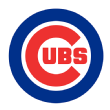 14. Chicago Cubs
14. Chicago Cubs
Win forecast: 82.9
Change from end-of-season roster: -4.6
Power rating: 82.0 [Rank: 15]
Division%: 27.3 | Playoff%: 37.1
Pennant%: 4.3 | Title%: 1.7
The Cubs can hope for some bounce from regression seasons from 2020 stragglers Kris Bryant and Javier Baez. But Chicago has shed some name players since the season ended and hasn't been acting like a team aching to spend for high-level replacements. It's a shame, too, because the NL Central is quite winnable.
Win forecast: 82.4
Change from end-of-season roster: +3.9
Power rating: 82.6 [Rank: 14]
Division%: 12.1 | Playoff%: 30.8
Pennant%: 3.3 | Title%: 1.5
The Nats have the look of a stars-and-scrubs team right now, with some top-of-the-majors strengths (Juan Soto, Trea Turner, Max Scherzer, Patrick Corbin) and some glaring holes (catcher, first base, right field, third base). Washington has plenty of options on the market to fill those holes and will be doing so with a lot of teams trying to pinch pennies. The Nats look as though they are a tier down from the Braves and Mets as the offseason picks up, but they have a clear path to closing that gap by the time the season begins.
Win forecast: 82.3
Change from end-of-season roster: +2.1
Power rating: 81.2 [Rank: 16]
Division%: 24.3 | Playoff%: 33.8
Pennant%: 3.9 | Title%: 1.6
The Redbirds can cover the loss of Gold Glove second baseman Kolten Wong by moving Tommy Edman to second base. St. Louis isn't likely to spend this winter beyond trying to keep Yadier Molina and Adam Wainwright around for one more season. As always, the Cardinals will go as far as their developing players take them.
Win forecast: 80.4
Change from end-of-season roster: +3.1
Power rating: 81.0 [Rank: 17]
Division%: 9.5 | Playoff%: 19.6
Pennant%: 1.8 | Title%: 0.6
Stop me if you've read this before: The Angels look like a perfectly middling team with an obvious area for upgrade in its rotation.
Win forecast: 79.0
Change from end-of-season roster: +1.3
Power rating: 80.0 [Rank: 18]
Division%: 3.2 | Playoff%: 13.7
Pennant%: 1.2 | Title%: 0.4
The Blue Jays' offense looks strong and has considerable breakout potential with so many talented young hitters. Still, for Toronto to escape the middle of the pack, the Jays need additional help at the top of their pitching staff.
 19. Cincinnati Reds
19. Cincinnati Reds
Win forecast: 77.5
Change from end-of-season roster: -1.4
Power rating: 77.0 [Rank: 21]
Division%: 10.2 | Playoff%: 15.7
Pennant%: 1.5 | Title%: 0.6
Re-upping with Trevor Bauer would give the Reds perhaps baseball's best rotation, but the upgrade would be relatively marginal from the group Cincinnati already has. On the other hand, if the Reds can land a premier shortstop and some kind of high-octane, high-contact bat, they would gain front-runner status in their division by the time spring rolls around.
Win forecast: 77.0
Change from end-of-season roster: -4.1
Power rating: 78.1 [Rank: 19]
Division%: 4.0 | Playoff%: 11.7
Pennant%: 1.0 | Title%: 0.4
With J.T. Realmuto on the market, the Phillies have an up-the-middle need -- as in every spot up the middle. That's probably not great. And if they were to trade right-hander Zack Wheeler, as weekend rumors suggested as a possibility although the club denied it, they'd have a hole-filled rotation as well. No wonder they're having so much trouble finding a general manager.
 21. Texas Rangers
21. Texas Rangers
Win forecast: 76.7
Change from end-of-season roster: -4.5
Power rating: 77.1 [Rank: 20]
Division%: 4.3 | Playoff%: 9.6
Pennant%: 1.0 | Title%: 0.3
The Rangers made one offseason splash by announcing that utility player-turned-catcher-turned third baseman Isiah Kiner-Falefa would be taking over for Elvis Andrus at shortstop. At present, it looks as though Andrus will get the bulk of the time at the hot corner while the Rangers wait on prospect Josh Jung. The Rangers have started to take on a different look offensively, but remain in need of more contact and on-base ability from their hitters.
Win forecast: 75.5
Change from end-of-season roster: +2.2
Power rating: 76.0 [Rank: 22]
Division%: 0.7 | Playoff%: 8.4
Pennant%: 0.4 | Title%: 0.2
When Arizona has surprised in recent seasons, much of it has happened because the Diamondbacks have gotten better-than-expected showings from players helped by their big league development processes. The Snakes will need that to happen again if they are going to surprise in 2021.
Win forecast: 74.1
Change from end-of-season roster: +1.5
Power rating: 73.9 [Rank: 23]
Division%: 2.6 | Playoff%: 5.6
Pennant%: 0.4 | Title%: 0.1
The Royals just keep nudging the envelope forward to the point that with a couple of breakouts from young veterans such as Adalberto Mondesi and Hunter Dozier, and the rise of their young rotation, Kansas City is more mediocre than bad at this point and the trend arrow is pointed upward. The Royals could really use a power bat for either left field or to chip in regularly at DH. Former Cub Kyle Schwarber would help those spots as well as address the team's need for more walks. But Schwarber will have plenty of suitors.
 24. Colorado Rockies
24. Colorado Rockies
Win forecast: 71.7
Change from end-of-season roster: +2.1
Power rating: 72.6 [Rank: 25]
Division%: 0.2 | Playoff%: 3.5
Pennant%: 0.1 | Title%: 0.0
Yeah, I don't really get what the Rockies are doing. This team couldn't afford/didn't need David Dahl? I fear for the primes of Nolan Arenado and Trevor Story.
Win forecast: 71.5
Change from end-of-season roster: +2.9
Power rating: 71.1 [Rank: 27]
Division%: 2.6 | Playoff%: 4.1
Pennant%: 0.1 | Title%: 0.0
On a team mostly devoid of strengths, the first full season from Ke'Bryan Hayes will at least be fun to watch.
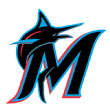 26. Miami Marlins
26. Miami Marlins
Win forecast: 71.4
Change from end-of-season roster: +0.8
Power rating: 73.1 [Rank: 24]
Division%: 1.1 | Playoff%: 3.3
Pennant%: 0.2 | Title%: 0.1
Last season was encouraging for the Marlins, but this is still a rebuilding club, albeit one with a contention-worthy rotation. They need offense and it almost doesn't matter where it comes from.
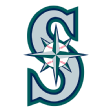 27. Seattle Mariners
27. Seattle Mariners
Win forecast: 71.2
Change from end-of-season roster: +5.6
Power rating: 72.4 [Rank: 26]
Division%: 1.2 | Playoff%: 2.6
Pennant%: 0.1 | Title%: 0.0
The Mariners aren't at a place in their rebuild where they need to go overboard, but this version of their roster looks pretty pitching poor. Still, you wouldn't expect the M's to add more than marginal options from free agency.
Win forecast: 68.3
Change from end-of-season roster: -0.9
Power rating: 69.7 [Rank: 28]
Division%: 0.1 | Playoff%: 1.2
Pennant%: 0.0 | Title%: 0.0
On paper, the Giants' pitching figures to struggle in 2021, but they've gotten a lot of mileage out of low-key acquisitions in the recent past and you figure more of those will be in the offing. The weakest-hitting positions are third base (Evan Longoria) and shortstop (Brandon Crawford), reflecting that the page hasn't quite completely turned from the old Giants to the new.
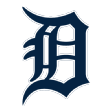 29. Detroit Tigers
29. Detroit Tigers
Win forecast: 65.9
Change from end-of-season roster: +1.5
Power rating: 66.3 [Rank: 29]
Division%: 0.3 | Playoff%: 0.5
Pennant%: 0.0 | Title%: 0.0
The Tigers currently project to finish 27th in rotation ERA, but with Casey Mize and Tarik Skubal soon to be joined by Matt Manning, the breakout potential of that unit is the most exciting thing about the team. Detroit projects to rank last in home runs, so that's an obvious need, but there are a lot of sluggers on the market. However, the Tigers also look below average on defense and I'd like to see them go heavy on glove men to support their budding starting staff.
Win forecast: 62.0
Change from end-of-season roster: -1.7
Power rating: 64.5 [Rank: 30]
Division%: 0.0 | Playoff%: 0.2
Pennant%: 0.0 | Title%: 0.0
The Orioles are hellbent on not getting stuck in the middle. Over the past couple of offseasons, they've sidestepped controllable seasons from a number of everyday players in order to keep their payroll low. This offseason, they've let Renato Nunez and Hanser Alberto walk, though they say they want to re-sign the latter to a lower number than he would have gotten via arbitration. Still, as the Orioles wait for their future foundation to solidify, there's a feeling that Baltimore keeps ending up back at the starting line. Right now, the glaring need is for a starting shortstop after the O's traded Jose Iglesias to the Angels.

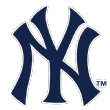 2.
2. 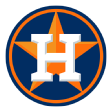 3.
3.  4.
4.  5.
5.  6.
6.  7.
7. 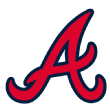 8.
8. 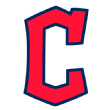 9.
9. 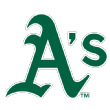 10.
10. 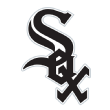 11.
11. 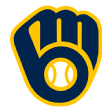 12.
12. 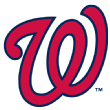 15.
15.  16.
16. 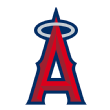 17.
17. 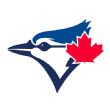 18.
18.  20.
20. 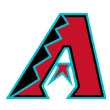 22.
22. 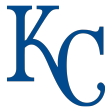 23.
23.  25.
25.  28.
28. 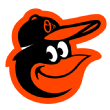 30.
30.